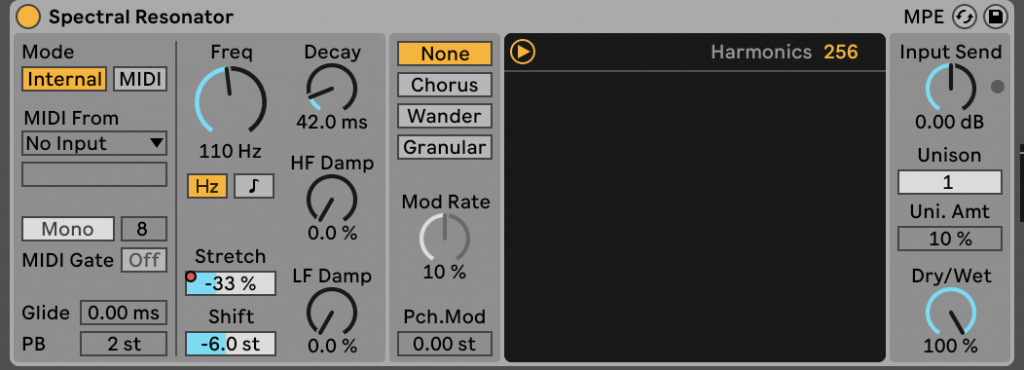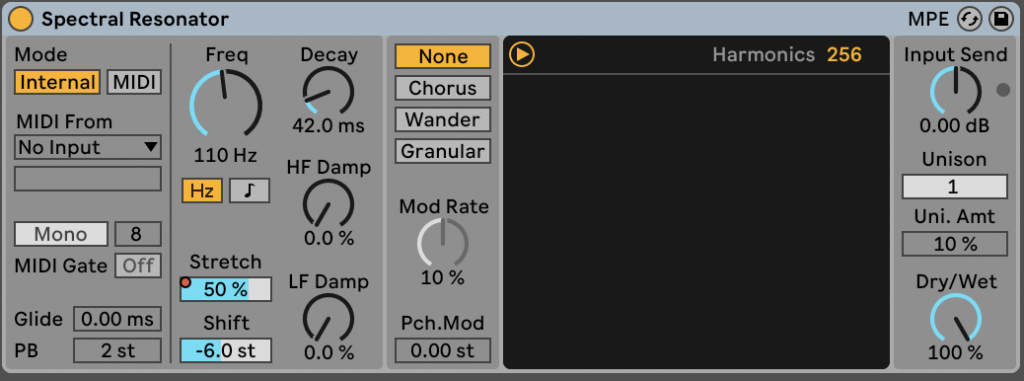In a part of group project, we had to design, script and record an alien calling into a radio station. Initially, we were going to create the alien’s voice by modulating the recorder’s (Patrick’s) own voice, but during the recording process, I suggested that we record it in a normal voice and then apply sound effects to it, so we recorded two versions: one with the modulation and one with the normal voice and then suggested that we try different ways to create the alien sound and compare them and use the best one.
When I first tried out the alien sound, the group leader commented that it sounded too hilarious to be used , and gave me feedback that the sound of feeling awkward or scared when we heard the alien voice because it was different from us would fit the direction. I then looked on platforms like YouTube to see how other people made alien sounds and created four different sounds using two effects I found.
The first method is vocoding. Vocoding is a technique where you add a human voice to a sound with a specific melody, so that the human voice is generated with that specific sound and melody. I set the Operator, Ableton Live’s built-in instrument, to a saw waveform, set a certain melody, and applied the Vocoder effect to the recorded voice, which was a pretty successful alien sound. However, there were a couple of issues, the first being that the melody I had input to the Operator was a monotonous melody with chromatic semitones, so it sounded more like a robot speaking than an alien speaking. This was somewhat solved by applying an LFO to the Shifter effect and periodically fine-tuning it to create subtle pitch changes. The bigger problem, however, was that the modulation was so severe that it was difficult to understand what was being said. No matter how alien the sound, this is an artificially created radio session and you need to make sure the audience is aware of what is being said, and too much modulation makes this difficult. In the end, I decided not to use this sound.


The second way is to use the Spectral Resonator effect, which is an effect that shows a frequency spectrum and allows you to easily change the way the sound resonates. This also creates a scratching alien sound like the one above, but the nice thing about using this effect is that it makes it easier to hear what the alien is saying by adjusting the values of the effect.
I created three different sounds with this effect, the first sound was created by using the LFO to subtly adjust the frequency of the effect without adjusting any of the other knobs in the effect. The reason for adjusting the frequency was because, as mentioned above, the pitch of the voice doesn’t change and being constant can make it harder to hear and sound awkward. However, there was still some awkwardness in the pitch of the voice, so I thought of another way to remove that awkwardness by controlling the knobs in the effect myself.

This is how I ended up with the second and third sounds. These sounds were created using the Spectral Resonator effect as before, but the difference between them and the first sound is that I manually adjusted the Stretch part of the effect. The only difference between the two sounds created using this method is the band in which the Stretch is varied. The first sound was adjusted between -10% and -50%, which is good for a low-voiced alien, and the second sound was adjusted between 30% and 60%, which is good for a higher-voiced alien.



In conclusion, I created four different alien sounds using different methods, which are currently shared with the team and we will decide which sound to use.